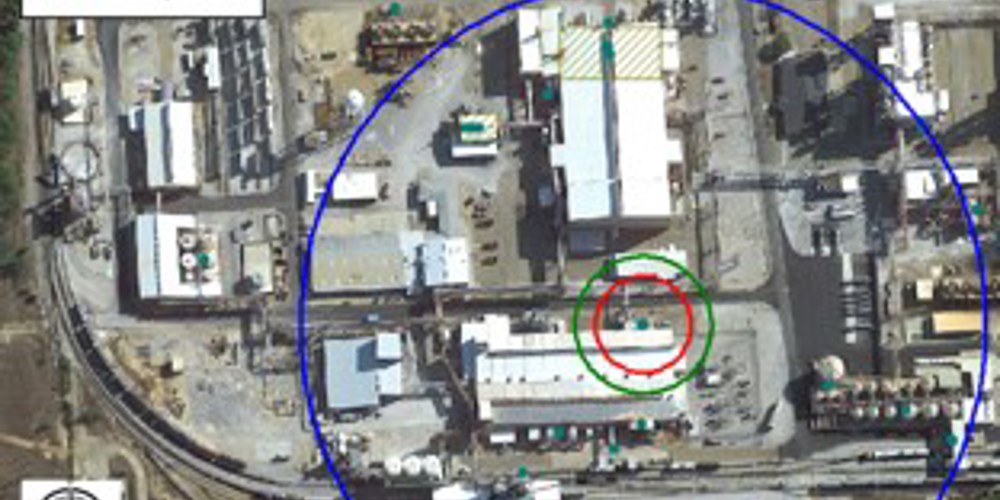A chemical organization produces hydrogen peroxide and sodium chlorate for the pulp and paper industry. The site handles hazardous and flammable materials, presenting risks to employees and the local community. Recognizing the need for a thorough understanding of these hazards, this company sought to evaluate the risks posed to occupied buildings during normal operations.
The company commissioned ESi to perform a facility siting study. The goal was to identify Maximum Credible Events (MCEs) such as fires, explosions, or toxic gas releases and evaluate their potential impact on occupied buildings.
Our Approach
The project followed the American Petroleum Institute’s Recommended Practice (API RP 752), which provides guidelines for assessing and managing risks associated with process plant buildings. The study began with identifying buildings of interest, such as the main control room, quality lab, and engineering building. These buildings were selected based on factors like occupancy levels and proximity to hazardous materials.
The next phase involved identifying potential hazards and defining MCEs, including hydrogen explosions, chlorine toxic dispersions, and hydrogen peroxide decomposition. Using advanced modeling tools like DNV-GL Phast, ESi simulated fire, explosion, and toxic dispersion scenarios under various weather conditions.
These simulations helped determine the impact that each scenario would have on the occupied buildings. ESi also assessed building vulnerability using pressure-impulse curves and thermal impairment criteria. For example, the study examined how explosion overpressure and fire-induced heat would affect structural integrity and occupant safety.
Hydrogen explosion scenarios were identified as significant hazards. A release in the compressor room could increase concentrations to dangerous levels. The resulting explosion could generate overpressure that impacted multiple occupied buildings. The estimated vulnerability remained below the defined criteria for acceptable risk, and mitigation measures could further reduce this probability. The study also evaluated potential explosions from hydrogen peroxide decomposition. These showed minimal risk due to relatively low energy release.
Toxic dispersion scenarios were modeled for chlorine, hydrogen chloride, and hydrogen peroxide. Many scenarios showed exposures above 50% of the Immediately Dangerous to Life or Health (IDLH) threshold, with durations too brief to pose significant risks to occupants. A few scenarios indicated potential lethality fractions for specific buildings. These highlighted the need for enhanced measures to safeguard occupants.
ESi also analyzed fire impacts, concluding that jet fires from hydrogen and ammonia releases posed negligible risks to building integrity. Dispersion modeling confirmed that flammable concentrations would not reach any of the occupied structures under the evaluated conditions.
Services Utilized
Expertise Utilized

The Outcome
The qualitative risk assessment categorized the overall risk level as requiring high-priority remedial actions. Recommendations included adding ventilation in the compressor room to prevent hydrogen buildup, enhancing hydrogen detection and emergency shutdown reliability, and conducting detailed computational fluid dynamics analyses for specific scenarios to refine risk assessments and mitigation strategies.
By identifying credible hazards and evaluating their potential impacts, ESi enabled comprehensive safety solutions. The study ensured compliance with industry best practices and reinforced the client’s commitment to protecting workers and the community.
Summary:
ESi’s facility siting assessment enabled the client to identify and understand key hazard scenarios affecting occupied buildings, leading to informed, safety-focused decisions. The study offered targeted risk mitigation actions to ensure operational resilience and improved on-site safety performance.


